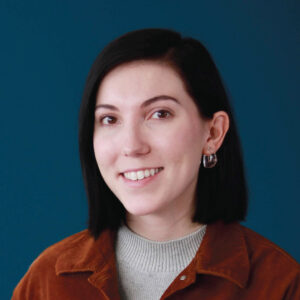
Content Strategist
It’s me again, Emspace + Lovgren’s resident AP Stylebook geek. If you’ve read our blog about the AP Stylebook, then you know that it covers more than grammar rules — it has frequently updated recommendations for how to talk about groups of people. For Disability Pride Month, I’m revisiting and sharing some disability-related language recommendations (as of July 2023). I encourage you to familiarize yourself with this information as a baseline, but always remember to ask a person how they want to be described when possible.
Avoid writing that implies ableism: the belief that abilities of people who aren’t disabled are superior. Ableism is a concept similar to racism, sexism and ageism in that it includes stereotypes, generalizations, and demeaning views and language. It is a form of discrimination or prejudice against people with disabilities.
Avoid words that suggest pity, such as “afflicted with,” “battling” or “suffers from” any disability or illness, or that a person “overcame” their disability. Instead: has cancer, being treated for ADHD. Bear in mind that disabilities can be a combination of both challenges and assets. Generally avoid “living with” constructions unless a person uses that for themself. Avoid negative or condescending language such as “wheelchair-bound” or “Alzheimer’s victim.” Instead use accurate, neutral language such as “uses a wheelchair” or “a person with Alzheimer’s disease.”
Avoid dehumanizing mass terms such as “the disabled,” “the blind,” “the mentally ill,” etc. As with all writing, avoid broad generalizations, labels and stereotypes.
Many people use the term “people with disabilities.” Both people with disabilities and disabled people are acceptable terms, but try to determine the preference of a person or group. Be mindful that the question of identity-first vs. person-first language is vital for many.
Some people use person-first language in describing themselves: “a man with Down syndrome” or “a person with schizophrenia.” Others view their disability as central to their identity and use identity-first language, such as “an autistic woman” or “deaf students.” Autistic people and deaf people often — but not always — use identity-first language. When preferences of an individual or group can’t be determined, try to use a mix of person-first and identity-first language.
The terms “disabilities” and “disabled” are generally embraced by disabled people and are acceptable when relevant. Do not use euphemisms such as “handi-capable,” “differently abled” or “physically challenged,” other than in direct quotations or in explaining how an individual describes themself. Do not use “handicap” for a disability or “handicapped” for a person.
Avoid terms such as “normal” or “typical” for someone who does not have a disability. Instead: “People without a disability” or “nondisabled.”
Avoid using disability-related words lightly or in unrelated situations. Some examples: calling a person or an idea demented, psychotic, lame, blind, catatonic, moronic, etc.; saying something “falls on deaf ears,” “he turned a blind eye” or “the awards show is schizophrenic.” As in all writing, consider word choice carefully. Words that seem innocuous to some people can have specific and deeply personal or offensive meanings to others. Alternative phrasing is almost always possible.
This list only scratches the surface of disability-related language. The AP Stylebook includes even more entries about specific disabilities, like “blind, limited vision, low vision/partially sighted;” “deaf, Deaf, hard of hearing;” “neurodiversity, neurodivergent, neurodiverse, neurotypical” and a whole host of mental health-related language recommendations. If a subscription to the Stylebook is not feasible for you, there are many free, online resources for further information — The National Center on Disability and Journalism is a good place to start.